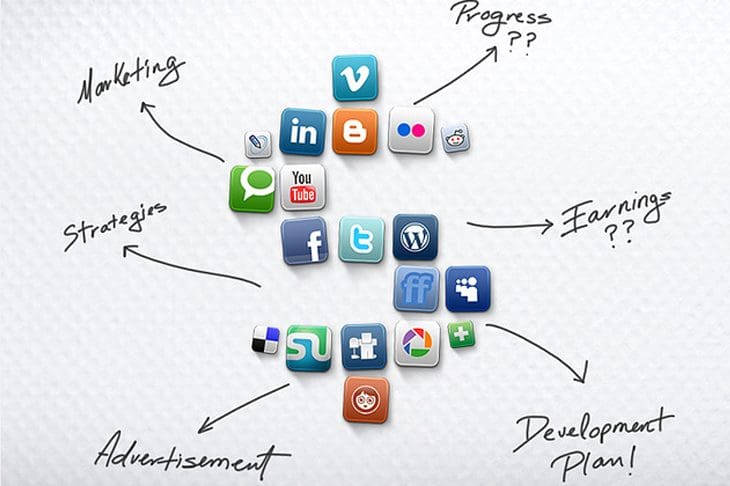The new brand story is told in bits and pieces, and without the benefit of even simple chronology.
Being relevant in content will help steer a customer’s eyes in a marketer’s direction says forbes this week. But to fix the customer’s gaze on the right message, relevance isn’t enough. The new metrics in attracting customer attention rely more and more on the creative contribution to the marketing mix: Immediate, compelling, visceral, and memorable. It’s an entirely new kind of marketing storytelling that requires a deep understanding of the platforms on which marketing stories are told. Below I outline ten critical principles that can help marketers inform and create the relevant messages they need for success in this new digital experience era:
1. Be Appropriate. The truth is that customers tend to be more loyal to a media platform than to anything a particular brand might be doing on that platform. Both content and intent are paramount in serving up an experience, honoring the silent agreement with a customer. Building and promoting a mobile app that’s simply a cut ‘n paste of your website (just one example, though there are shockingly many of them) violates that agreement, degrades the brand, and gives little reason to expect to capture a customer’s attention the next time.
2. Unearth Passions. In other words, think motivations, goals or aspirations: What lies beyond the demographic or segmentation profile? How are customers absorbing your digital content? Who among them are the most vocal? How many are marketing alongside you to their customer-peers? Don’t just measure what customers are doing, saying and buying. Listen to why they choose to do so.
3. Be Authentic. Nothing says phony like a brand that moves onto a platform, or that partners with a celebrity (or even with another brand) while offering no clear connection, no complement and no value extension. Purity is the new platinum in the customer experience: The speed and breadth with which customers can evangelize or terrorize your message make authenticity a core marketing imperative now.
4. Edit Yourself. Simple does not mean stupid. Today’s customer is quicker, more cognitively agile than ever before – which means complex ideas, intellectual leaps and in-depth metaphors will be avoided. And anything that looks like “work” will be ignored. As will the brand behind it.
5. Be Active. If you’re not prepared to live with your customers in a specific media or platform, you’re not ready to join that conversation. Customers expect brands to engage and respond not only in what a brand says but also in what it does – which means doing more than just deploying onto a platform and moving on. Participate fully once you’re there.
6. Be Making While You’re Marketing. Customers immersed – and comfortable – in the fragmented consumption of digital content are more interested in what’s happening now than in what we think is relevant, or meaningful, or good for them. Marketers now evaluate content instantaneously. What matters most is what’s new, which compels us to reinvigorate our messages by actively re-shaping, re-positioning, re-serving them in continuously varied ways.
7. Evolve the Engagement. Brian Solis said it well in a February 2012 article in Fast Company: “Engagement is not a campaign. It’s a continuum where technology is merely an enabler for a greater purpose.” No marketer today ought to get too attached to a channel or technology – no matter how reliable or familiar – as media is now fleeting and impermanent. Be prepared, and get ready to leap where and when your customer-audience leaps.
8. Surrender Willingly. Consider the social marketing effort around Super Bowl XLVI earlier this year. The NFL actively promoted the Twitter hashtag #SB46 to reference the big game and its festivities – but audiences had their own ideas. 96% of fans used #Superbowl or simply SuperBowl instead of the league’s “official” hashtag, which pulled in a paltry 4%. The NFL will surely take a lesson from this episode that goes something like this: What your customers do with your marketing message is more valuable than any assumptions you’ve made while creating it. Don’t direct (and don’t try to manage). Instead, invite your customers to step into the role of co-creators of your experience. And coauthors of your message.
9. Define Expectations. Then defy them. Setting customer expectations – about what you’ll do, and how and when you’ll do it – makes an explicit promise among your audiences. Going beyond them will deliver on it. Enhancing the customer experience that leverages data across the real-time marketing landscape requires establishing expectations, immediacy, accuracy and security.
10. What’s Monumental is Incremental. Take a phased approach to optimized messaging. Choosing to act decisively on just two or three of these principles can help inform and deliver a better customer experience. In a world gone digital – and a marketing calendar of perpetual beta – nomadic has become the new normal. And so has the need for marketers to craft messages in markedly different ways because of transient media consumption habits, smaller attention windows and instant, peer-to-peer broadcasting. Those kinds of experiences are less linear (for customers) and more demanding (for marketers) than they were just yesterday. But the flipside is just as true: When it comes to marketing messages, instant, quick and transitory are now the surest means to enduring, persuasive and memorable impacts for brands and their audiences.


